2020-21 CityLab High School Initiatives
Architecture
HOUSE FOR EUCLID OR THEASTER GATES
Class: Architectural Design I, Practicum in Architectural Design Grade Level: 10th & 12th Teacher: P. Goldstein
Driving Question: Can you design a house for a Mathematician or Social Practice Artist?
Project Summary: The 10th and 12th grade architecture students began this project by creating a series of still life drawings of geometric objects and found objects. This allowed the students to work on their drawing, compositional, and spatial visualization skills. They were asked to use the massing of one of their still life drawings as the starting point for a house design for the Greek Mathematician Euclid (using geometric objects), or for Nasher Prize Laureate and social practice artist Theaster Gates (using found objects). The challenge the students faced was to transform a massing study into the design for a house that met the programmatic needs of a real world “client”- Theaster Gates or Euclid.

LA JUNTA DESIGN PROJECT
Class: Architectural Design I, Practicum in Architectural Design Grade Level: 10th & 12th Teacher: P. Goldstein
Driving Question: Can you identify and capture the “spirit of place” and design an entry gate, courtyard, and treehouse hotel unit for a Guest Lodge in Ruidoso, New Mexico?
Project Summary: Working with the property owner and a landscape architect, the students were asked to create designs for the La Junta Guest Lodge in Ruidoso, New Mexico. Students were introduced to this unique New Mexican property by the owner of the Guest Lodge and then began a series of case studies of similar sites across the Southwest and beyond. They were challenged to create designs for three different components at La Junta: the main entry gate, the courtyard, and either a treehouse hotel unit or an event space on the site of the existing barn. Through this project, the CityLab students were able to work on a real-world design challenge and share their ideas with the owner of this unique property.
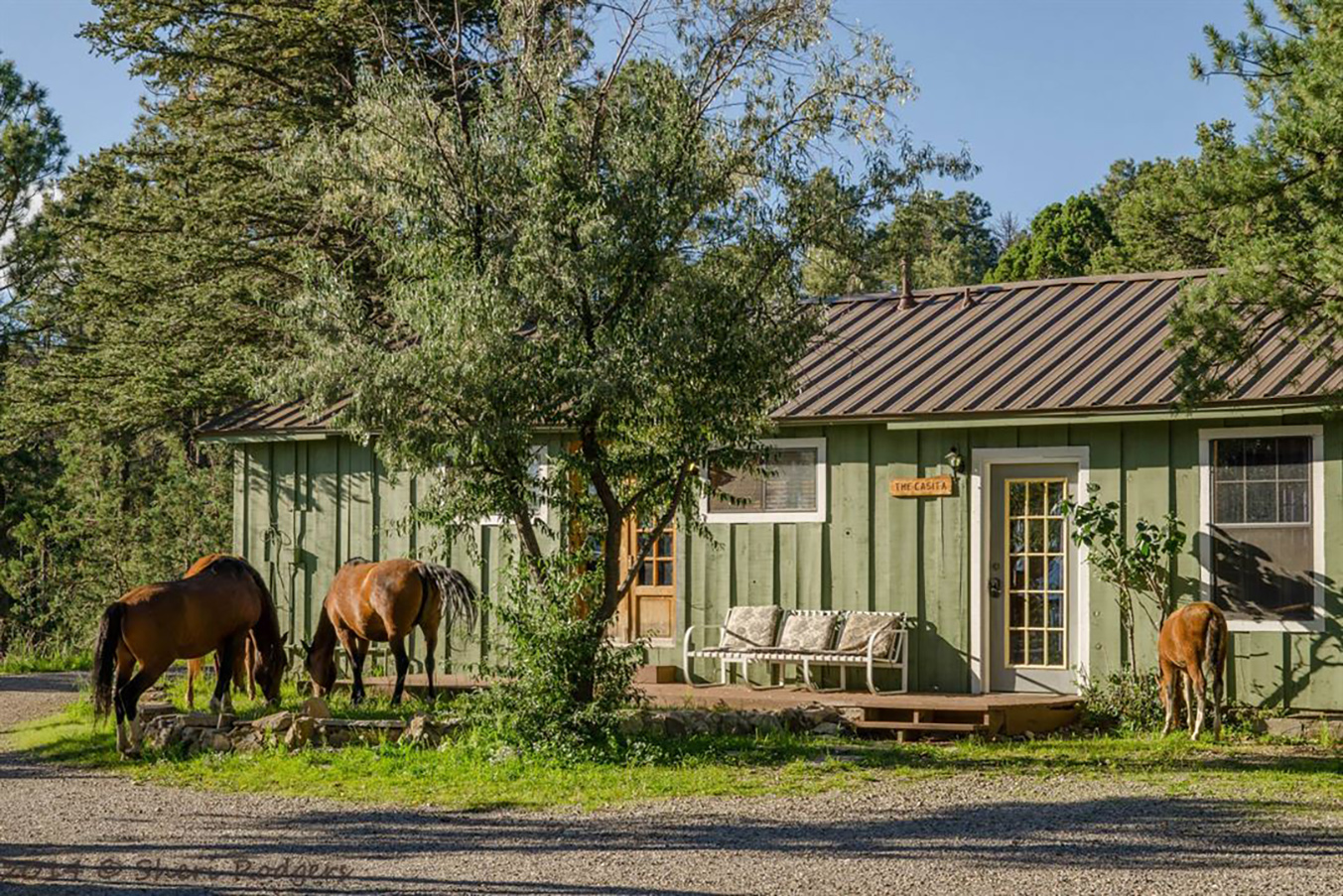
Industry/Community Partners: Landscape architect Leigh Ann Ellis, and the Owners of the La Junta Guest Ranch in Ruidoso, NM.
ADAPTIVE REUSE PROJECT
Class: Architectural Design II Grade Level: 11th Teacher: R. Hardaway Driving Question: What impact can adaptive reuse have on a community?
Driving Question: What impact can adaptive reuse have on a community?
Project Summary: Good design is not exclusive to brand-new buildings created on empty lots. Good design generates capabilities a building can bring to a community. There are a plethora of buildings around the world, and many in communities that need a beautiful catalytic revitalization. The goal of an adaptive reuse project is to repurpose existing space. Although adaptive reuse projects require different considerations than ground-up construction, a visionary design with careful consideration to the building and its surroundings has potential to uncover the greatest treasures hidden in plain sight.

Industry/Community Partners: Nick Cooper, Design Director + Principal at HKS; Ann Noble, Contractor at HKS; James McGee, Southern Dallas Progress Community Development Corporation
Urban Planning

MY ‘HOOD’S IDENTITY
Classes: Principles of Governance & Public Administration, Planning & Governance, Mexican American Studies Grade Level: 9-12 Teacher: O. Rivera-Ortiz
Driving Question: Why does my neighborhood look the way it looks? How did it become the way it is today?
Project Summary: In order for students to better understand their own identity, they need to explore the place they grew up in, where they live day in and day out. Students researched their own neighborhood’s history, physical and social characteristics by using their five senses, online data, and surveying community members. Students chose 9 to 12 blocks, including their own, to create a series of sensory maps based on the quality of the buildings and spaces, noise levels, perceived safety, and smells. They collected data maps on hidden characteristics such as crime and safety, topography and flood maps, home and land value, among others, followed by historical, demographic and social facts. Students concluded the research surveying their family and neighbors to collect diverse points of view on what works and what doesn’t around their area, leading them to propose physical, organizational, and policy changes or initiatives that would improve the quality of their communities.
Industry/Community Partners: Dallas Central Library; Dallas City Hall (Andreea Udrea); Bradford Russell, BR Architects; Dana Hamdan, Gensler; Karen Walz, SCS; Gavin Newman, GFF; Doug Neri, GFF; Priscilla Almendariz, GFF; Cesar Celis, GFF; Bryana Cozart, GFF; Becca Vahldick, GFF
Guest Speakers: Roberto Zúñiga, Urban Planner & Landscape Architect @ A4LE & Garland ISD; Arturo Del Castillo, AIA & Urban Designer at City of Dallas; Sam Markham, AIA, Senior Associate @ Stantec; Garrett Jones, PE @ Thornton Tomasetti; Cruz Garcia, Designer & Activist @ WAI, Professor @ Univ. of Pittsburg, VA Tech & Univ. of Illinois; Rodman Riddick, Urban Planner @ GFF; Paco Rodriguez, FAIA, Director of the Architecture School @ Univ. of Illinois, Urbana-Champaign; Lorena Toffer, AIA, UTA Professor & DISD Interior Design CTE Teacher; Laura Quintero, UTA Urban Planning Grad Student & DISD Interior Design CTE Teacher; Diego Barrera, AIA, Design Director @ Stantec

DFW ALTERNATIVE TRANSIT BIKE PROJECT
Classes: Principles of Governance & Public Administration, Planning & Governance Grade Level: 9-12 Teacher: O. Rivera-Ortiz
Driving Question: What opportunities will low-income communities have access to if we better connect transit and bike lanes across DFW?
Project Summary: Students identified the bike networks around their area and proposed connections to make a more efficient ‘alternative transportation’ system. They researched an urban topic of interest (i.e. segregation, food deserts, access to jobs and better education, homelessness) and proposed physical or policy changes that would address those challenges
Industry/Community Partners: Dallas City Hall (Andreea Udrea)
Guest Speakers: Diego Barrera AIA stantec, Roberto Zuniga urban planner Garland ISD, Arthur Santa-Maria, Developer, Hoque Global
Environmental Sustainability
HYDROPONIC SYSTEMS
Classes: Environmental Sustainability Grade Level: 9-12 Teacher: Ms. Gardner
Driving Question: Can plants grow inside?
Project Summary: The gardening project had been suspended due to Covid-19 restrictions. However, those who come to campus for in-person instruction have managed the hydroponic systems. They grew lettuce in the hydroponic systems in the classroom as a form of Supervised Agricultural Experience (SAE).
The Environmental Sustainability pathway curriculum consists of three sections including classroom and laboratory instructions, Supervised Agricultural Experience (SAE) and National FFA. Students have been receiving instructions and engaging in class activities via virtual learning. We have inaugurated the CityLab FFA Chapter and the chapter is undergoing its chartering process to be formally recognized at the local, state and national levels.
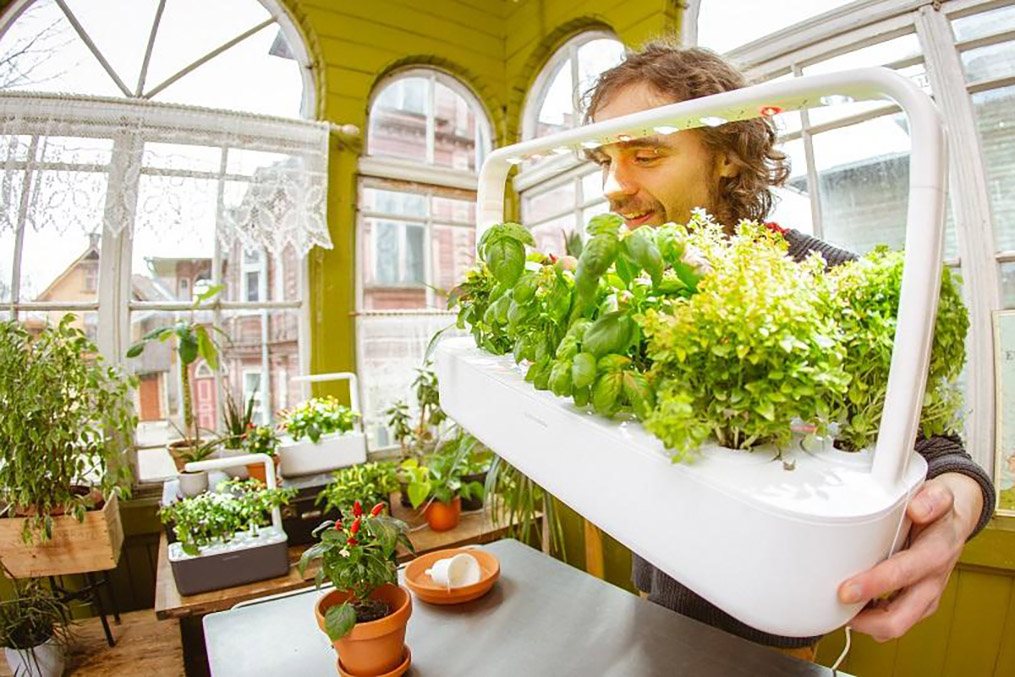
Industry/Community Partners: Dallas City Hall (Andreea Udrea)
Guest Speakers: Diego Barrera AIA stantec, Roberto Zuniga urban planner Garland ISD, Arthur Santa-Maria, Developer, Hoque Global
GREEN CAREERS DALLAS RENEWABLE ENERGY PROJECT
Classes: Principles of Ag., Food and Natural Resources, Energy & Nat. Resources, Practicum in Agriculture, Food and Natural Resources Grade Level: 9-12 Teacher: A. Gardner
Driving Question: How can I reduce my carbon footprint at home?
Project Summary: This project focused on understanding how human activity impacts climate change. Students participated in a virtual event with Green Careers Dallas that highlighted careers in environmental sustainability. Following the presentation, students calculated an estimate of their personal carbon footprint in the areas of shopping, transportation, food, and home and compared it to the national average of others similar to them. After researching ways to reduce the emission of greenhouse gases and increase the use of renewable energy, students designed and implemented a short-term action plan to reduce their carbon footprint at home over a 5-10 day period. Students submitted their projects to receive feedback from industry partners, who picked the winners for each grade level and announced them live at a second virtual presentation.

Industry Partners: Tracy Wallace – Executive Director, Green Careers Dallas; Mark McCollum – Lead Instructor, Green Careers Dallas; Mike Brown – Sustainability Engineer, HKS, Inc.; Lawrence Agu III – City of Dallas Planning & Urban Design
Student Winners: 9th grade: Charity Berhe: Cutting Animal Products from Diet
10th grade: Alexander Ortiz: Shopping Online vs Shopping in Stores
11th grade: Denise Dixon: Avoiding Fried Foods and Caffeine
12th grade: Aaron Rojas: A Diet’s Carbon Footprint (High vs. Low)
BETTER UNDERSTANDING THE WORLD AROUND US (USING THE SIMS)
Class: Environmental Science/Systems Grade Level: 12th Teacher: B. Toomer
Driving Question: How can environmental science (and its terms) be exhibited using the fictional world of The Sims mobile game?
Project Summary: Students were tasked to create a SIMS family, composed of at least four characters, while identifying at least five environmental terms in the game. For example, the term “biodiversity” is used when explaining the variety of life that is seen in nature – from plants to humans to dogs/cats. As the students play the game, they captured each depiction of the term. The terms came from a list on Quizlet.com (created by the teacher). Students were able to be as creative as they’d like. With the captured pictures and terms, students were to congregate this information onto a Google Slides presentation.

Field Studies: Several field studies were conducted virtually via the Environmental Education Center to explain the 16 terms that were spotlighted in this project. The field studies were utilized to help the students understand real-world application of the terms as to better identify them in a video game setting.
THE FUTURE OF EVOLUTION
Project Teachers: B. Toomer, S. Berggren, J. Hernandez Grade Levels: 10th to 12th grades
Driving Question: Based on today’s climate, how do you believe humans will evolve within the next 100 years? (Assuming that evolution is sped up and based solely on environmental factors)
Project Description: Today’s world is moving at a much faster pace than we realize. Students focused on the environmental factors that can cause a human to evolve (disease, technological advances, air/water pollution, etc.). Students researched traditionally accepted methods of evolution from past scientific discoveries and pinpointed the top three pressing issues of this time (e.g. COVID-19, air/water pollution, technology). Based on the behavior exhibited from these events, students focused on one specific trait to be evolved (i.e. smaller pupils because of increased screen time and subsequent vision issues).
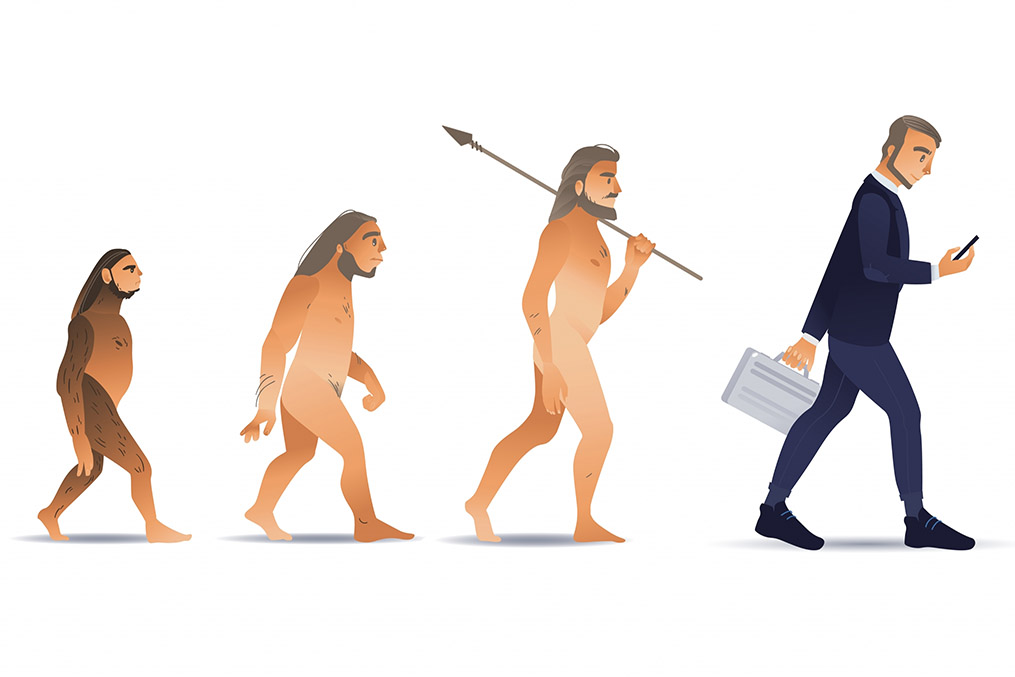
Science
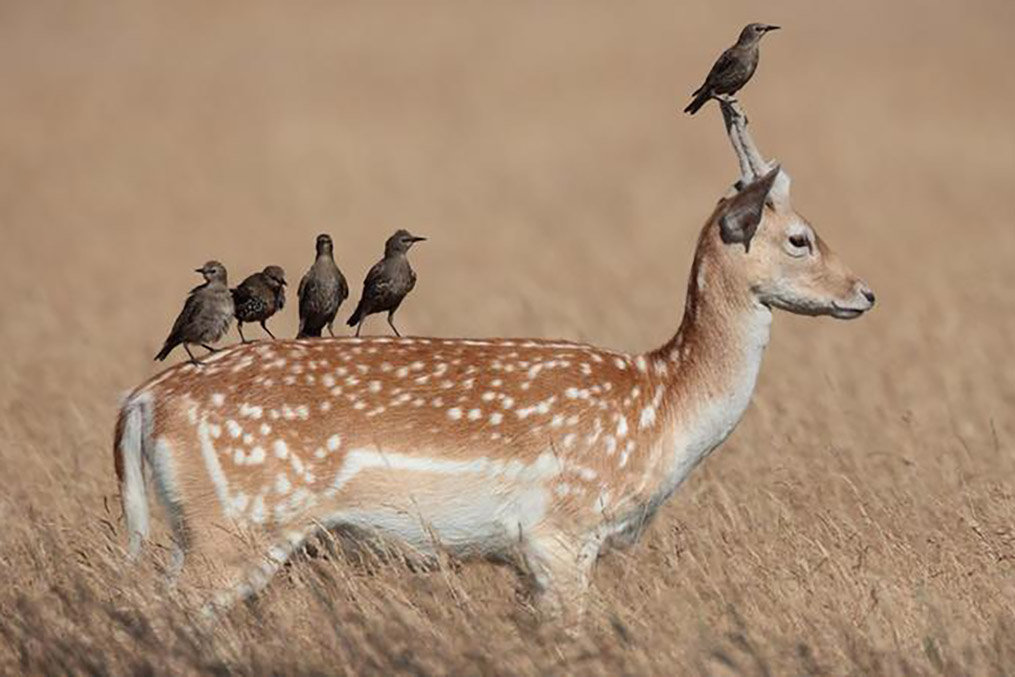
TELLING MY SYMBIOTIC STORY
Class: Biology Grade Level: 9th Teacher: B. Toomer
Driving Question: How can a symbiotic relationship (mutualism, commensalism, parasitism) be depicted through a fictional story created by the students?
Project Summary: Students were tasked with creating a fictional story about two organisms that are in a symbiotic relationship, whether it is mutualism, commensalism, parasitism. Students were able to be as creative as they’d like and could submit an actual book or an online version via Google Jamboard. The book must be at least 5 pages long, including the cover.
Industry/Community Partners: The outside sources used to better understand this topic were BrainPop, NearPod, and YouTube videos that showed these symbiotic relationships. In other settings, other scientists would’ve been invited in to discuss their knowledge about symbiotic relationships.
Field Studies: Virtual field studies was conducted via the Environmental Education Center, where the staff virtually walked through what symbiotic relationships are, the animals involved (in Texas and elsewhere), and what we’ve learned from these organisms through observation.

BRIDGING THE GAP
Class: Physics Grade Level: 11th Teacher: Seawright
Driving Question: Is it possible to make a bridge using limited types of materials?
Project Summary: Students created a bridge that was able to traverse their sink at home or a set distance when at school. They were limited on the materials they could use in addition to being limited on the adhesives they were allowed. They also had to research what types of bridges there were in the world today and figure out which one was the best for the project at hand. The bridge was then tested for maximum weight to see where it would break. Afterwards, they did an analysis on what was good and bad about their bridge and what could have been improved.
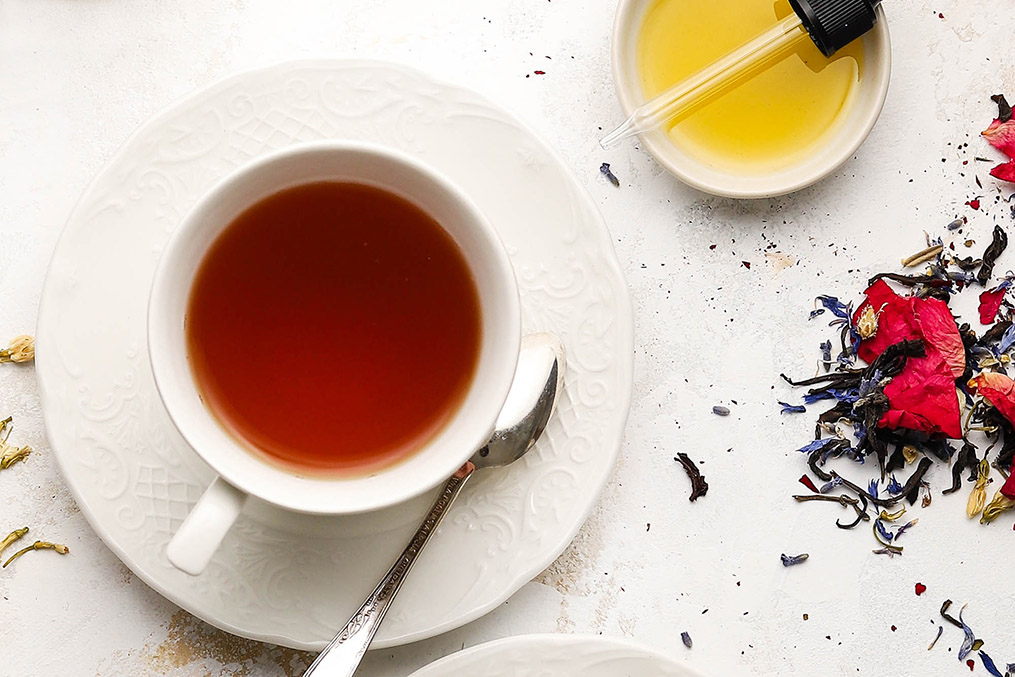
TEA AND CRUMPETS
Class: Chemistry Grade Level: 10th Teacher: Seawright
Driving Question: What is the maximum solubility of sugar in tea?
Project Summary: Students were asked to test the solubility of sugar in tea as well as one other substance from a list in tea. They were tasked with researching unsaturated, saturated, and supersaturated solutions and defining what theirs was. Then they completed an analysis on their project looking at the types of ingredients, the method, as well as the materials used and seeing if they could improve it for next time.
Mathematics
DEAR DATA (inspired by the work of Giorgia Lupi & Stefanie Posavec)
Class: Practicum in Architecture & Statistics Grade Level: 12th Teacher: P. Goldstein and M. Nunley
Driving Question: How Might Data be Beautiful?
Project Summary: This was an interdisciplinary data analysis project between the 12th grade Statistics & 12th grade Practicum in Architecture courses where students used Lupi and Posavec’s Dear Data Project as an inspiration to observe, collect, and create their own visual language. Students engaged in a series of drawing/sketching exercises that built their knowledge on using data as a communication tool.
Students used their visual language to create a series of postcards that represents their daily activities and meaningful moments to answer: “How Might Data be Beautiful?” Every week, we collected data on a shared topic to investigate and reveal aspects of ourselves and our days to share with each other. At the end of the week, we analyzed our data, drafted a visualization, and created a legend that allowed others to interpret the visual language used. Through this format, each week was an exploration in how data is human and personal where even the choice in data collection is a unique representation of each person.
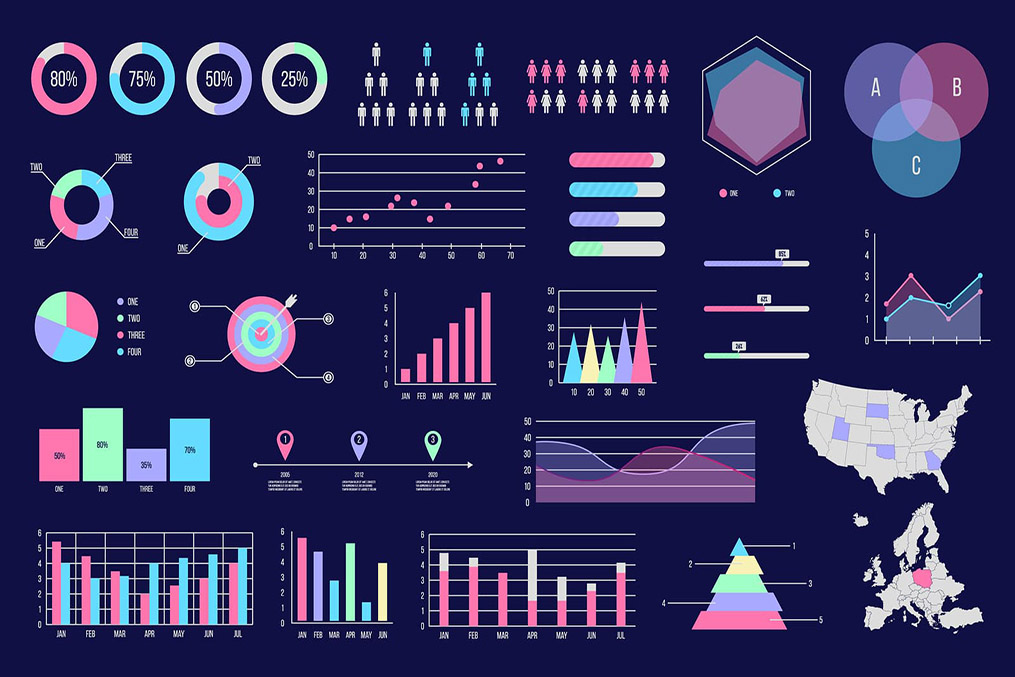
THE SET LIST
Class: Statistics Grade Level: 12 Teacher: M. Nunley
Driving Question: How might music affect our mood?
Project Summary: In “The Set List”, students statistically analyzed how music affects their mood. The deliverables included an infographic/visual representation and a statistical report to share student findings and learning. As students worked through this project, they might ask: Can I model relationships mathematically in order to describe, analyze, make predictions, and draw conclusions about a set of data?
Through this project, the following learning skills were addressed:
- Describe the form, direction, strength, and outliers of a scatterplot visually
- Interpret the slope and y-intercept in context
- Make a prediction by evaluating the equation of a line of best fit
- Calculate and interpret residuals
- Use technology to determine an LSRL
- Calculate and interpret the correlation coefficient
- Describe lurking variables

Thank you to Korey Hlaudy from Da Vinci Schools for sharing resources and support.
MAKING MY MARK
Class: Algebra I Grade Level: 9th Teacher: L. Avera and M. Nunley
Driving Question: What mark represents your identity?
Project Summary: In “Making My Mark,” students investigated how to express some of their identity by creating a personal logo and writing a personal narrative. They created their own logo by graphing several blueprint drafts to demonstrate their knowledge of linear functions, domain, and range. Students were assessed on their proficiency with the mathematical concepts of graphing linear equations, writing equations of line, and domain and range of line segments. In addition, they were assessed on how they understand the math, and how far they are willing to push their learning through the complexity of their logo design. Finally, this project also gave students the opportunity to learn about each other as individuals so that they can relate and make connections.

Thank you to Jeannine Liang from Da Vinci Schools for sharing resources and support.
MY FUTURE HOUSE
Class: Geometry Grade Level: 9/10th Teacher: J. Hernandez
Driving Question: How can we use different shapes to create our futuristic dream homes?
Project Summary: In “My Future House,” students created a floor plan of their future dream home. Students had the freedom to use a variety of shapes to create different rooms. By using all kinds of shapes, the students learned how to calculate the areas of different 2D figures. Throughout the project, students were assessed in their proficiency of how to calculate the areas of rooms, restrooms, and hallways. Students were also assessed in the way they calculate the price of flooring. They must choose two types of flooring and calculate the total cost needed to floor their house. Finally, this project helped students understand the meaning of the word “area” as the amount of physical space present in a particular location.

DESIGN A ROLLER COASTER
Class: Algebra 2 Grade Level: 10/11th Teacher: S. Berggren and J. Hernandez
Driving Question: How can you use mathematics to design the ultimate thrill-seeker’s roller coaster?
Project Summary: Many students have been to Six Flags, the Texas State Fair, and maybe even Disney World. Students had the opportunity to create a rollercoaster of their liking to maximize their thrills. Students used their skills and experience to make the most extreme roller coaster out of various building materials. Through this project, students developed understanding about visual representations of functions, including domain, range, rate of change, increasing/decreasing intervals, relative maximums and minimums, and discontinuities.

Government and History
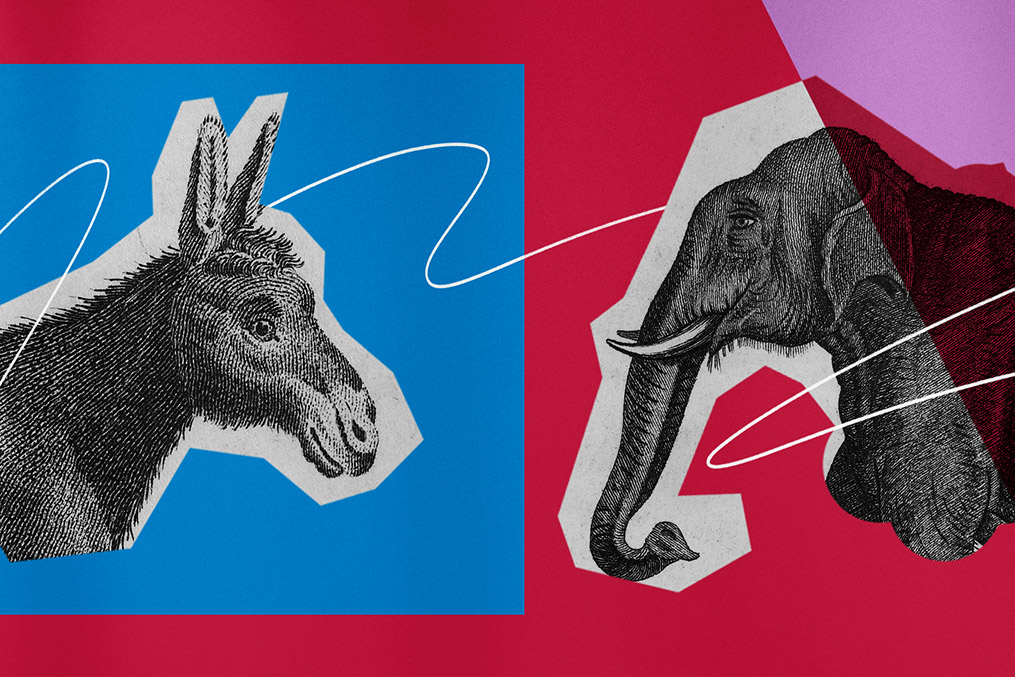
Party with Politics
Project Teachers: D. Good, N. Seawright Grade Levels: 10th to 12th grades
Driving Question: How are political parties created?
Project Description: Students evaluated the societal impact of government and launched a new political party by developing a party platform which addresses various issues at the local, state, and federal levels.

NPR PODCAST CHALLENGE: AFRICAN AMERICAN CULTURE & HISTORY
Class: African American Studies Grade Level: 9th to 12th Teacher: D. Good
Driving Question:How can a podcast be used to educate an audience about contemporary or historical African American culture?
Project Summary: As part of its annual podcast challenge, NPR provides resources, lessons, and tutorials to students in grades 5-12. As part of the African American Studies Curriculum, students were asked to create a podcast about a contemporary or historical topic associated with African American Culture. Students selected topics including Segregation, The Civil Rights Movement, Contemporary relationships with the Police, and challenges faced by Black members of the LGBT community. Sstudents created over 2 hours of podcasts, learned about media production, and oriented themselves with audio software and podcast hosting apps.
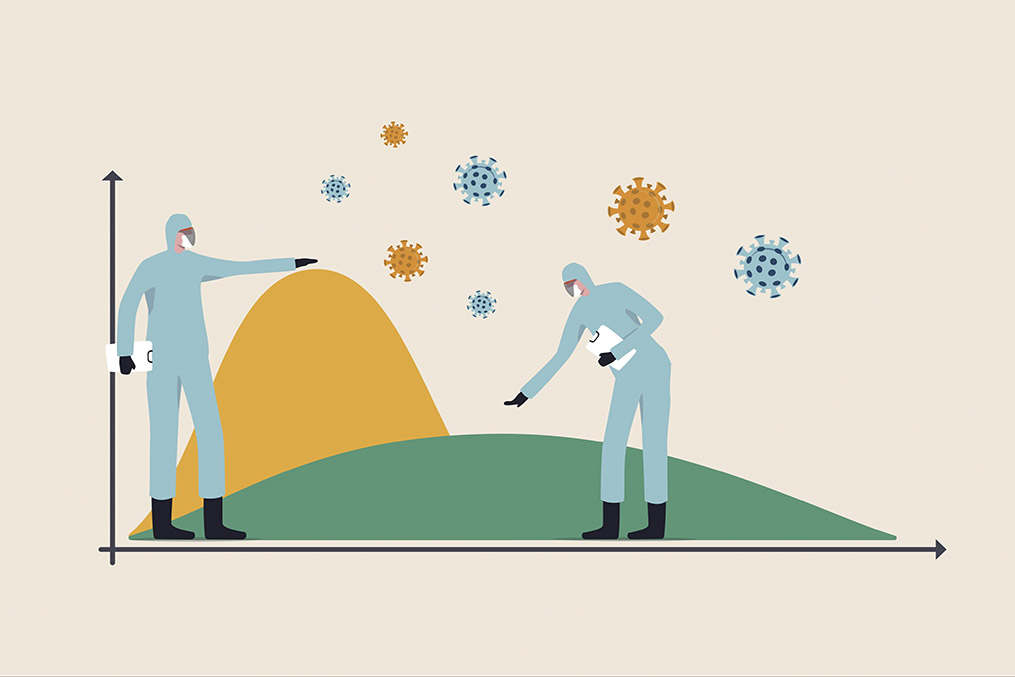
COVID PRIMARY SOURCE
Class: AP World History Grade Level: 11th Teacher: J. Sayed
Driving Question: What primary sources will future historians use to learn about life in 2020 and 2021?
Project Summary: Students examined the role of primary sources in learning about history. They examined a group of photographic primary sources during the early Coronavirus pandemic, and then created their own representations of life during the virus with an emphasis on how their lives were impacted to be shared with future historians.
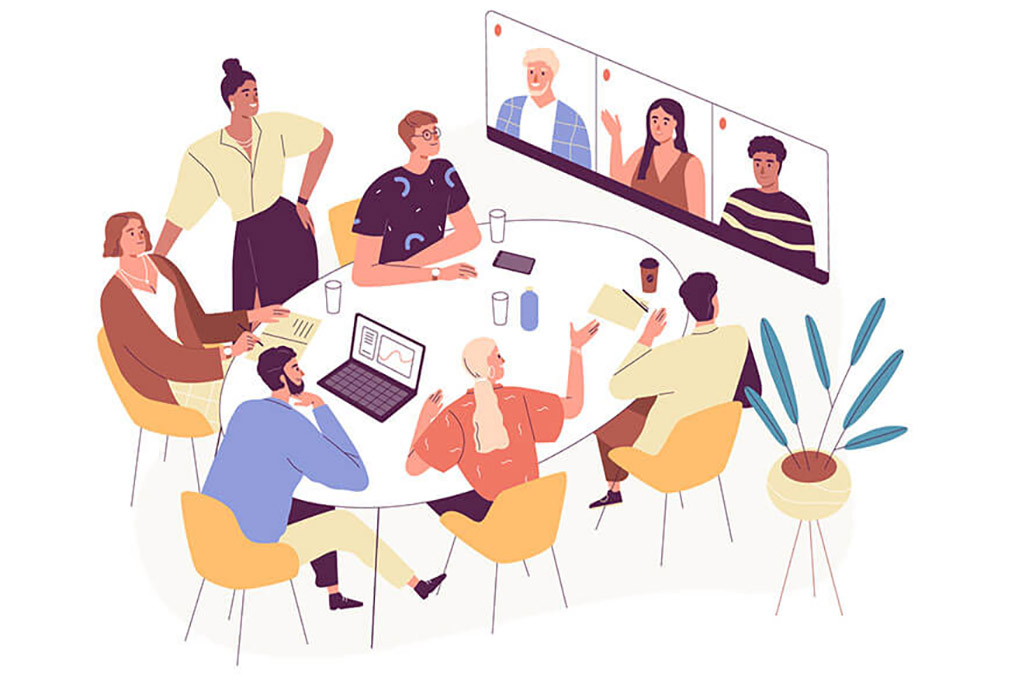
CURRENT ISSUES INFOGRAPHIC
Class: AP, OnRamps, and On-level US History Grade Level: 11th Teacher: J. Sayed
Driving Question: How have current debates around an issue important to me developed over the past 30 years?
Project Summary: Students researched the federal-level debates, legislation, and Supreme Court cases to develop an understanding of the current debates surrounding an issue important to them. They represented these debates visually on an Infographic to educate others about their chosen issue.

SCHOOL DISCIPLINE PROJECT
Class: Government & Economics Grade Level: 12th Teacher: L. Avera
Driving Question: How might we impact DISD Board of Trustees policy making on school discipline that impacts us as students?
Project Summary: Students analyzed the current and proposed school discipline processes used by the Dallas ISD. Students identified a component of DISD’s discipline policy to research related to banning school suspensions. Students created a final product such as a fully written email, a social media post, a fully written speech to the school board or a full article to reflect their learning and opinions of the policies.
Guest Speakers: Johno Oberly, Leadership ISD, Sandra Godina, Leadership for Educational Equity (LEE)

POLITICAL PARTICIPATION PROJECT
Class: AP Government Grade Level: 12th Teacher: L. Avera
Driving Question: How might we promote Gen Z’s knowledge around their rights as tied to the founding documents?
Project Summary: Using the founding documents of the U.S., students considered how they might educate Gen Z on their rights through the creation of a new political participation tool. Students gathered information on common political participation tools, analyzed bias in education products, considered a question or topic they wanted to address, created a new political participation tool with their peers and launched their product to their intended audience.
Language Arts and Journalism
A TRIP DOWN MEMORY LANE: REFLECTIVE WRITING WITH SEL PRACTICES
Class: Journalism Grade Level: 9th to 12th Teacher: M. Boyd
Driving Question: How do we use different genres of writing to understand and support the development of student thinking and turbo-charge curiosity and explore creativity?
Project Summary: The legendary Toby Fulwiler, author of The Journal Book, writes, “Without an understanding of who we are, we are not likely to understand fully why we study biology rather than forestry, literature rather than philosophy. In the end, all knowledge is related; the journal helps clarify the relationship.” This project was dedicated to the four principles of effective writing: economy, transparency, variety, and harmony. It inspired students to become stronger, more confident writers, improve memory and problem-solving skills, promote self-awareness and increase motivation. Using the elements of writing, art, and design, the students used their own creative space to share their thoughts and memories about their children, their present and future endeavors. They executed their ideas in a variety of media including digital, drawings, collages, scrapbooks/memory books. This is a commitment to incorporate SEL into the classroom curriculum, fostering critical thinking for journalism students.

TEENAGE EXPERIENCE
Class: English II Grade Level: 10th Teacher: A. Henery (In collaboration with L. Dowdy)
Driving Question: What are the defining elements of being a teenager?
Project Summary: In “Teenage Experience”, students explored what the defining characteristics of being a teenager are by creating a music playlist, collage, a short writing piece, journal/diary entries, and making connections to their own lives, as well as Shakespeare’s Romeo and Juliet. Students created a project of their choosing that highlights and explains what they think are the essential elements of life as a teenager. They drew connections between their own experiences and the experiences of Romeo and Juliet. Students made connections between the text and their lives, as well as developed writing skills through their explanation of the connections. This project allowed students to see how some of the elements of teenage life may have remained the same throughout time.
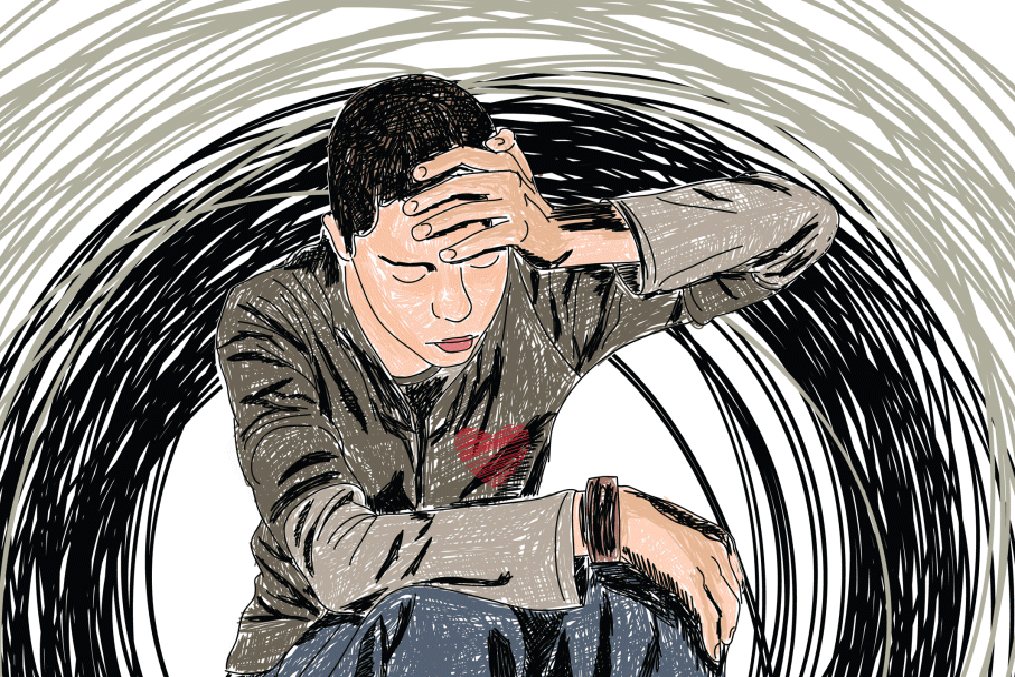
DOCUMENT YOUR 2020-2021
Class: OnRamps English III & AP Language Grade Level: 11th Teacher: L. Dowdy
Driving Question: How can I curate and create artifacts from 2020-21 that convey my experience of this year?
Project Summary: This school year has been a year like no other. Students have faced a global pandemic, online schooling, isolation, shifts in their routine, boundaries, and social lives. For this project, students had the chance to document their pandemic school year. Students reflected on their artifacts from the past year, what they have already documented and created, and looked for common themes. They created a timeline of their year and reflected on the timeline using writing prompts from the New York Times. They thought about what they can use or create that’s unique to their identity, considered medium and genre, and decided what to submit. They presented their project by creating an artist’s statement detailing why they made the choices they did.

Other Projects

9th Grade Design Project
Project Teachers: M. Nuney, L. Dowdy, F. Herman, R. MuMin Grade Levels: 9th Grade
Driving Question: How might we explain and advocate for environmental justice?
Project Description: 9th grade students engaged in the Introduction to CityLab PBL Experience. In this foundational experience, we explored the mission, vision, and values of CityLab through a theme. 9th Grade students learned about the process of project based learning and why we focus on this model for our students. This year, our theme was Environmental Justice.

Post-Secondary Possibilities
Project Teachers: L. Avera, A. Henery, P. McCovery, M. Boyd Grade Levels: 12th grade
Project Teachers: L. Avera, A. Henery, P. McCovery, M. Boyd Grade Levels: 12th grade
Driving Question: What do you want to do after high school?
Project Description: What do you want to do after high school? That’s a question seniors often face, and the goal of this project was to help them begin to answer that question.
Students compiled materials for post-secondary success including a deep dive into college and career plans post-high school. Students put together materials necessary for college/job applications (resume, letters of recommendation, etc.) and had opportunities to prepare for standardized tests (SAT/ACT, TSI). Students gave peer-reviewed feedback on application components and heard from industry professionals around their pathway to their post high school goals.
Events & Partnerships
CITYLAB MURAL PROJECT
In the Fall of 2020, the mural designed by CityLab students became a reality and was painted on the CityLab building by Eyecon Studios. The mural is titled “Zest, Zeal, Verve” and was designed by the founding class of CityLab students when they were in the 10th grade. Through this PBL project, the students produced a work of public art that engages with the wider community and creates a visual identity for CityLab HS.
The CityLab Mural Project was guided by CityLab teacher Peter Goldstein in collaboration with community partners Janeil Engelstad from Make Art with Purpose (MAP), and Chris Arnold and Jeff Garrison of Eyecon Studios. Through this project, the students learned about the various aspects of designing and producing a large-scale work of public art. This project was funded through a matching grant sponsored by Downtown Dallas Inc. (DDI) and the CityLab High School Foundation. Working with Ms. Engelstad and Delaney Smith from Make Art with Purpose (MAP) and Eyecon Studios, the mural reflects the mission and vision of CityLab HS.
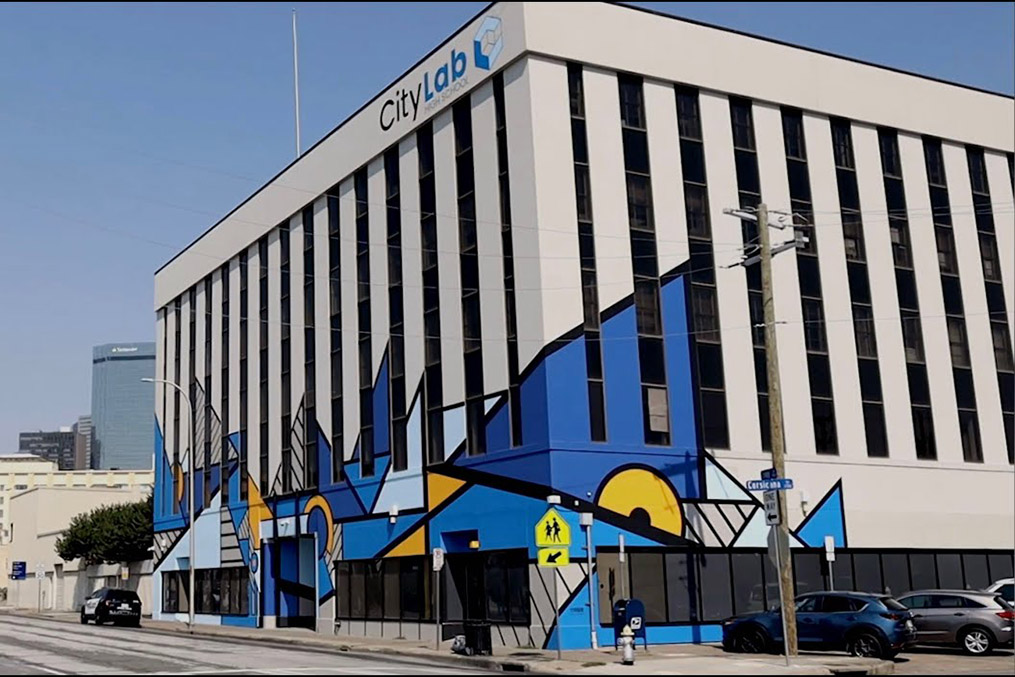
Industry partners: Janeil Engelstad and Delaney Smith MAP (Make Art with Purpose), Downtown Dallas, Inc., CityLab High School Foundation, Chris Arnold and Jeff Garrison Eyecon Studios, Jackson Walker LLP
4th Annual CityLab Summit: Fall 2020
Each year, CityLab HS and the CityLab HS Foundation co-host the CityLab Summit that brings together students, teachers, families, local business and design professionals to engage in a discussion about the city and the places that we live, learn, work and play. The Summit provides students with an opportunity to interact with industry experts and develop a better understanding of how they approach real-world challenges in the fields of architecture, urban planning, and environmental design.
Driving Question: How can students transform the CityLab building to have a positive impact on the neighborhood and community?
The 2020 CityLab Summit focused on the Trinity River Watershed as well as progress on the Harold Simmons Park project in downtown Dallas being designed by Michael Van Valkenburgh Associates (MVVA). MVVA Principal, Elizabeth Silver, launched the Summit at the start of the school year, and for 9 weeks, 85 students from all three pathways worked in remote teams on the Summit design project. CityLab students had the opportunity to work with students from UTA, the Trinity Park Conservancy, and a host of industry and community partners on designs for an Urban Environmental Center in The Bottom neighborhood adjacent to the Trinity River.
Liz Silver delivered the Summit Keynote Address, “Bringing the City to the River: Dallas’ Harold Simmons Park” which was open to the general public and the entire CityLab community. Students presented their designs to industry experts and community stakeholders which was followed by a school-wide discussion about the designs and their ability to enhance The Bottom neighborhood and connect the community to the river.

Sponsors: Deedie Rose, Corgan, Jackson Walker, The Beck Group, Omniplan, Gensler, ALA, AIA Dallas, Matthews Southwest, Page/, Suffolk Cares, Urban Commons, Huitt-Zollars, Gioia Goyer Group, KAI, Oglesby Greene Architecture, Perkins+Will, Talley Associates, Bernbaum/Magadini Architects, Bryant and Nancy Hanley Foundation, Ashwood Companies, GFF, Bodron/Fruit, The Trust for Public Land, McAfee3 Architecture+Design, The Dallas Architecture Forum, DSGN, Plus Design, GDPC, Far + Dang, Hoque Global, APA Texas Chapter, UNT Urban Policy & Planning, UTA CAPPA, Downtown Dallas Inc., 5G Studio Collaborative
10th grade ACE Mentor Program - Year 3
This year marked the third year of the ACE Mentor Program of America, Inc. (ACE) at CityLab. ACE serves hundreds of 11th and 12th grade students in the DFW Metroplex each year and reached out to CityLab to pilot a 10th grade ACE program in Dallas in 2018. During year 3 of ACE, the program focused on the design of a Tiny House and the students investigated the site, structure, and environmental impact of their designs. Due to the COVID pandemic, all sessions were held online.
At ACE, practicing professionals work with high school students as mentors and inspire them to pursue careers in design and construction. The mission of ACE is to engage, excite, and enlighten high school students interested in pursuing careers in architecture, engineering, and construction through mentoring and to support their continued advancement in the industry.
12th Grade Architecture Dual Credit Class with UTA CAPPA
The initiative to provide dual college credit to CityLab students was expanded this year to include two courses at the University of Texas at Arlington College of Architecture, Planning and Public Affairs (UTA CAPPA). Online course ARCH 1301, Introduction to Architecture and Interior Design created by UTA Professor Kevin Sloan, and taught by Peter Goldstein focused on:
- Formulation of an architectural vocabulary and knowledge of the canonical ideas shared by design professions.
- Identification of the architects and interior designers who have established the foundation of these professions.
- Introduction to the nomenclature and the organizational/ordering principles common to the design professions.
- Introduction of building and city design concepts that critically describe and understand the built environment.
- Introduction to local and internationally acclaimed professionals in the Dallas-Fort Worth \ Metroplex and the various ways they practice design with local and international firms.
During the Spring 2021, students took ARCH 1341, Design Communications I. This course created by UTA Professor Dustin Wheat focused on freehand drawing within the dual concepts of observation and representation. The course explores various graphic techniques with emphasis on preparatory sketching, composition, contrast, texture, narrative, and line quality, and students were exposed to color use, physical model-making, orthographic delineation, and digital documentation.

